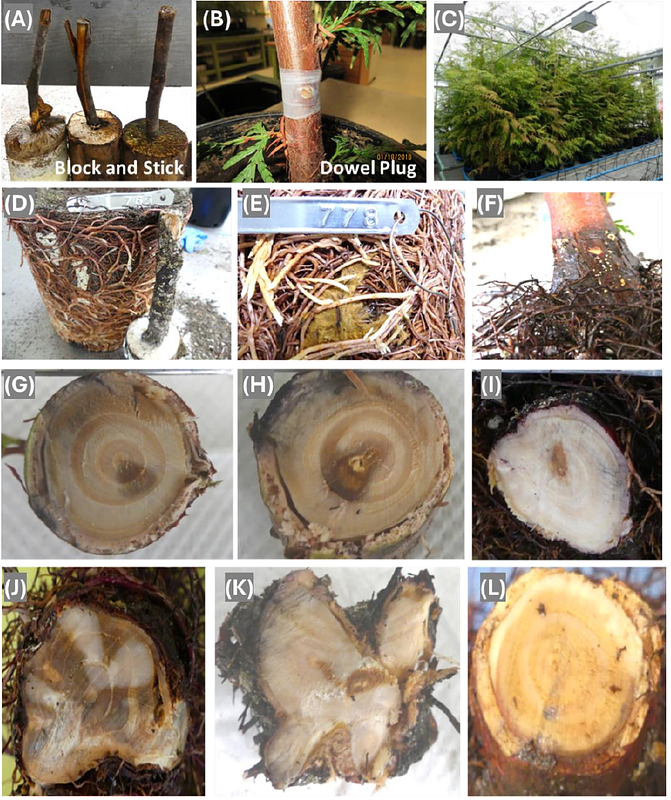Understanding wood decay diseases in western redcedar through development of ITS-sequencing and qPCR assays

Understanding wood decay diseases in western redcedar through development of ITS-sequencing and qPCR assays
Houston, S.; liu, j.-j.; Cruickshank, M.; Zamany, A.; Leal, I.; Filipescu, C.
AbstractRoot and butt rot diseases cause high rates of wood decay in living stands of western redcedar (WRC; Thuja plicata Donn), one of the most valuable forest species in western North America. However, WRC susceptibility and the virulence of wood-decay-causing fungal pathogens are understudied, presenting a high risk for the WRC forest industry. To evaluate susceptibility of WRC to root and butt rot diseases and decay incidence, four pathogenic fungi, including Armillaria ostoyae, Coniferiporia weirii, Heterobasidion occidentale, and Perenniporia subacida, were used to inoculate WRC seedlings using two artificial methods. Next-generation sequencing (NGS) of internal transcribed spacer (ITS) region of the nuclear ribosomal DNA (rDNA) and quantitative polymerase chain reaction (qPCR) assays were developed to evaluate successful infection through detection of targeted pathogens inside the WRC tissues while development of disease was assessed by visual observation of wood decay. Disease incidence rates ranged from 20% to 60% while infection rates ranged from 80% to 100%, validating the effectiveness of the inoculation protocols. The qPCR assays designed with species-specific primers were validated for quantification of absolute abundance of C. weirii inside WRC host tissues with high sensitivity and specificity. These newly developed qPCR assays provide rapid, cost-effective, and accurate tools to detect early infection and latent infection in asymptomatic trees, with wide potential applications for surveillance of C. weirii-caused wood decay disease in greenhouse and field studies, as well as for screening of disease resistance in WRC breeding.